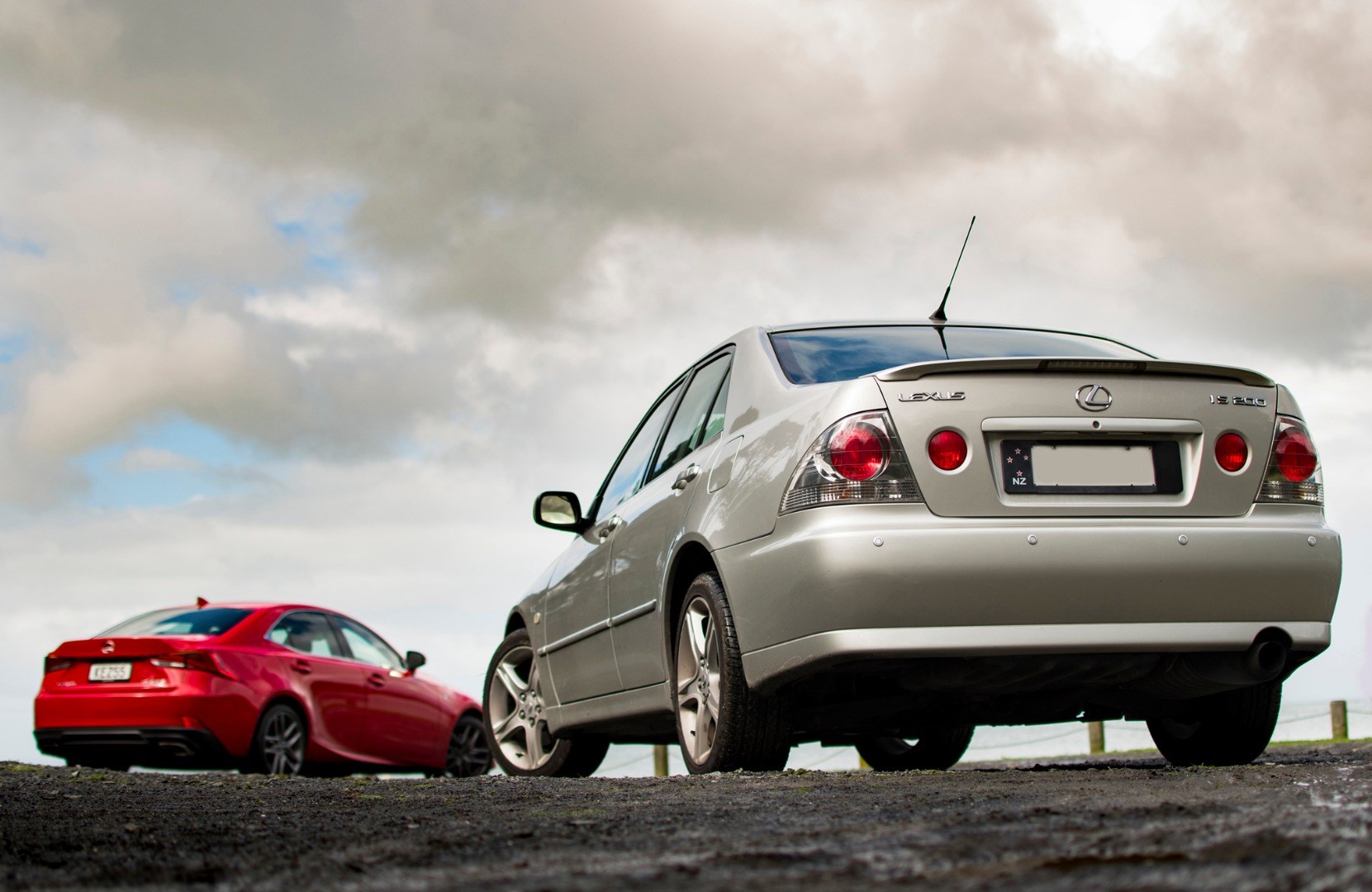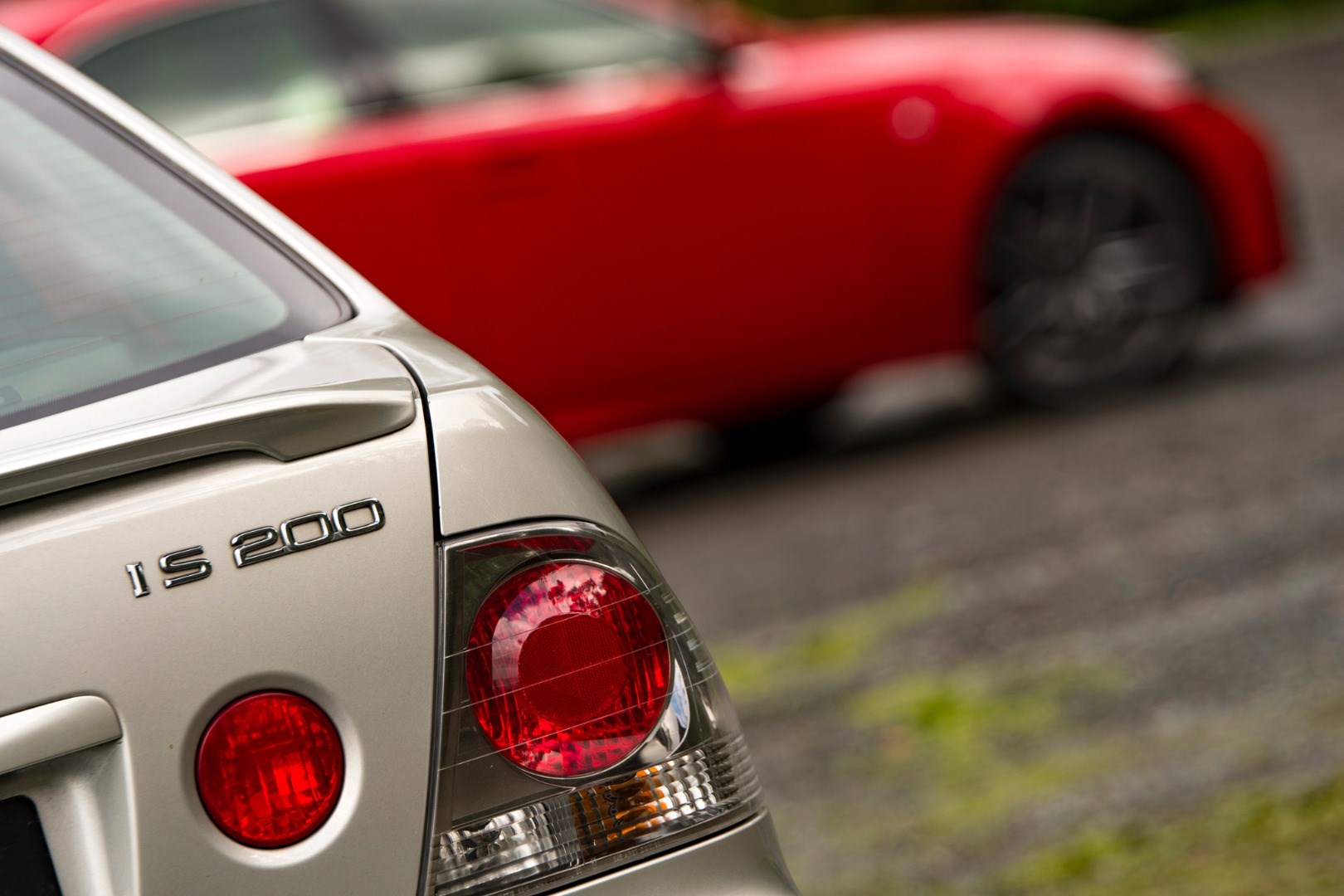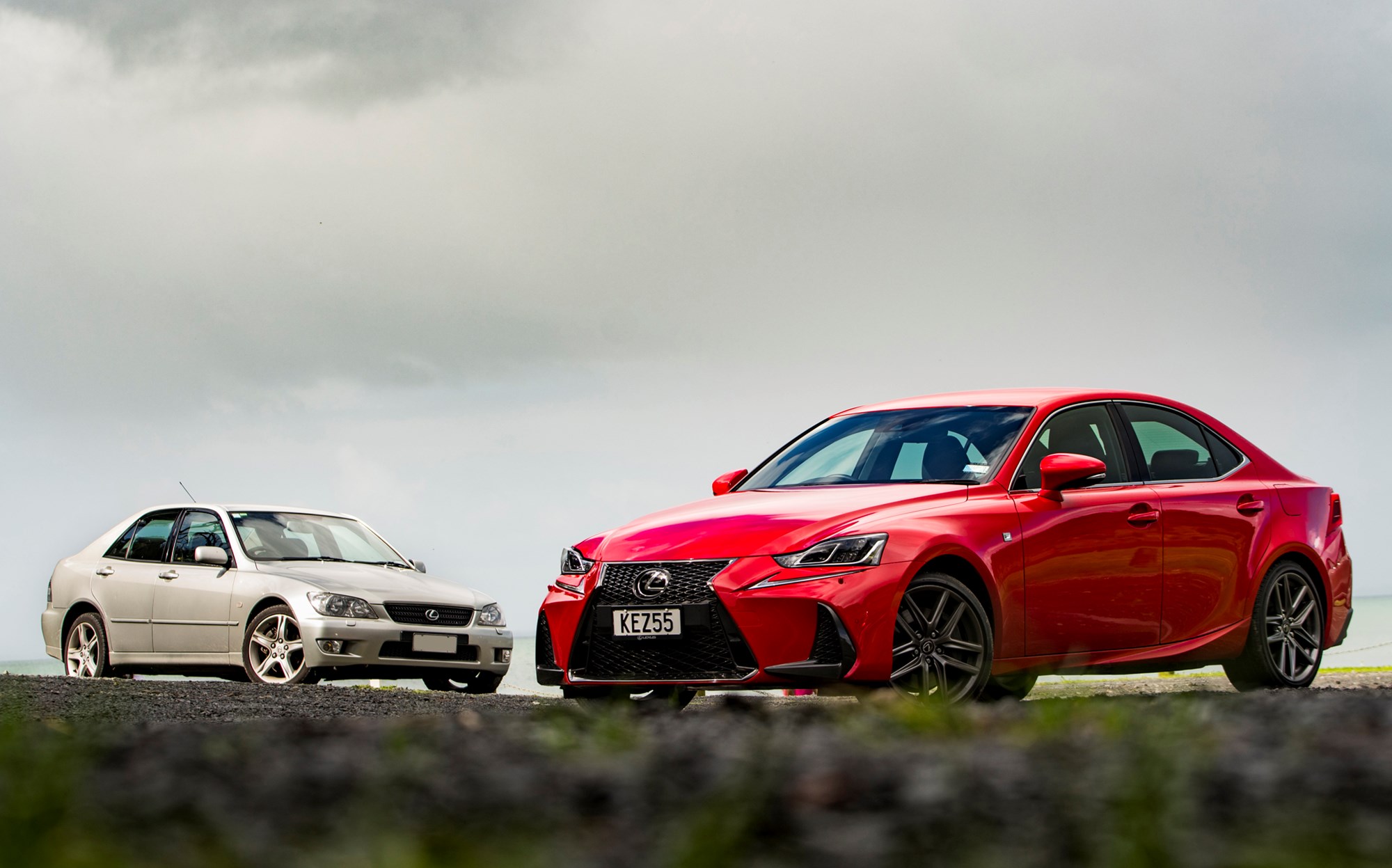If you needed a set of wheels, but only had $6,000 to play with, what would you buy?
It was a predicament I found myself in a few months ago, being between cars and looking for a reliable, solid interim machine to fill the gap. It needed to be relatively interesting to drive, well equipped, and most importantly reliable.
In the end I settled on a nice and clean 2003 Lexus IS200. Our relationship so far has been relatively healthy, although she’s been running a bit rough lately (one bottle of injector cleaner seemed to solve that).

In some ways it wasn’t a natural choice — I’ve never been a dyed in the wool fan of the brand by any stretch. But, nonetheless it’s a manufacturer that’s always interested me, and when the opportunity to test it up against its great grandchild (a 2017 Lexus IS200T F-Sport) came up I couldn’t say no.
Stacking the two up back to back, it’s easy to see that a lot has changed since 2003. And here’s where the biggest of those changes have been made.
Handling
They might be more or less the same size in terms of both engines and dimensions, with the wheels getting sent to the same place, but the two IS200s are very different things to drive. Especially when you’re giving them a bit of grief through the twisty roads of Laingholm.

Both cars are neutral on turn in, but from there it’s night and day. The old boy feels top heavy and soft, wallowing around corners unceremoniously. Push it, and you’re rewarded with a dash of oversteer — though this is strictly only recommendable in the dry. In the wet the whole car absolutely falls to pieces.
That’s a contrast to the new IS200T, which is completely impossible to shake. You can throw it into corners at very silly speeds, and it simply takes them. If you go too hard, it’s understeer not oversteer that’s on the menu. In some ways, it feels more like a very well sorted front-wheel drive car rather than a rear-wheel drive car.
Quality
In some ways, this might not be an entirely fair fight. The old IS200 was also sold, almost unchanged, as a Toyota, which may have contributed to it being produced with a smorgasbord of sub-par plastics. But either way, these two cars feel very different to hop into.
The old car is surprisingly basic inside. The dashboard is one huge slab of unforgivingly hard plastic. Yup, despite looking like it’s padded on the top, that’s just a moulding. What saves it are two very soft and comfortable seats in the front row, and a few other nice touches like the plush leather centre arm rest.

Upstart grandkid F-Sport on the other hand is simply a nice thing to sit in. Soft materials are everywhere from the hips up, broken up by a variety of metals and plastics. If there’s a complaint to be made, it’s the lack of a dedicated centre arm rest for front passengers. The sheer volume of different textures and surfaces can also throw one off.
What both cars do brilliantly in this regard is noise cancellation. They’re both extremely quiet, with new beating old simply by virtue of a quieter engine under the bonnet.
Technology
When the IS200 came out, it was well kitted out for toys. Buyers got electric and heated seats, a dimming rear-view mirror, cruise control, and even satnav in some models (not including mine).

But, all of this was simply about keeping up with the competition. Wind the clock forward, and it’s about so much more. Lexus are now perceived as a company on the edge of that technology curve, and the IS200T is no exception.
A lot of technology requisite to this segment is there — collision detection, lane assist, and so on. But there are also heap of minute touches too. Like the air-con ‘swipe’ buttons, the motorised gauge cluster, and the admittedly imperfect touchpad interface.
With stuff like this, Lexus has not only set itself up as being on par for tech with its rivals; it’s also defined by it.
Style
Bringing me to their best point of progression; style.
The original IS200 was a rather handsome car in my view. Even today I still think it looks athletic — more so than its rivals from the period.

But you couldn’t get away from the idea that it was simply an imitation of the BMW 3 Series. While current examples are somewhat sullied by the mod-culture image of the Toyota Altezza cousin, at the time many of the IS200’s design quirks were just attempts to look European. Things like the watch bezel in the gauge cluster.
The new-age IS however is all its own. You couldn’t mistake this car for any of its rivals if you tried. Some will despise the design, but that’s a matter of personal taste. I happen to quite like it. The real point here is that Lexus now design cars with their own design flare, their own edge, and their own identity.
Keep an eye out for Driven’s full review of the Lexus IS200T F-Sport in next Saturday's issue, and here on Driven.co.nz.



